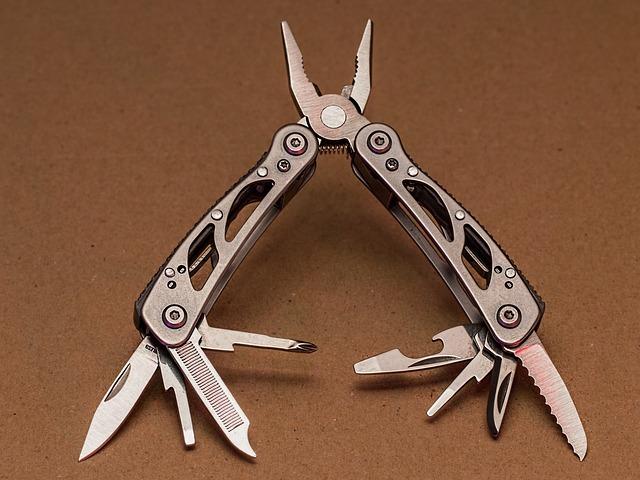Have you ever found yourself tapping your foot to a catchy tune or nodding your head in rhythm without even realizing it? That infectious groove you can’t resist comes down to something simple yet profound: beats per minute, or BPM. In the vast realm of music, BPM is the heartbeat that drives a song, dictating its tempo and determining how we connect with it. Whether you’re dancing at a club, studying with a playlist gently humming in the background, or lost in the melodies of your favorite artist, understanding BPM can enhance your appreciation of music in ways you might not have considered. So, what exactly does BPM mean, and why is it such a crucial element in music? Let’s dive in and unlock the beat together.
Understanding the Heartbeat of Music and Its Impact on Emotion
When we dive into the realm of music, we often find ourselves swaying to a rhythm that seems to resonate deep within our souls. This rhythm, expressed in beats per minute (BPM), is like the heartbeat of a song, dictating not only how we experience music but also how it affects our emotions. Think about it: fast-paced tunes can fire us up, making us feel energized and ready to conquer the world, while slower, more tranquil melodies might pull us into a state of reflection or calm. It’s not just a number; it’s the pulse that guides our feelings. Just like the rapid beat of a hummingbird’s wings can evoke feelings of excitement and urgency, a slow, steady heartbeat can bring a sense of peace and nostalgia.
Let’s break down how BPM can paint a vibrant emotional landscape in our minds and bodies. Here’s a quick look at some BPM ranges and their typical emotional connections:
| BPM Range | Emotional Impact |
|---|---|
| 60-80 | Relaxed / Melancholic |
| 90-110 | Uplifted / Inspired |
| 120-140 | Excited / Empowered |
| 150+ | Euphoric / Anxious |
By tapping into these BPM ranges, musicians and producers craft soundscapes that can influence our moods, like a painter selecting colors to evoke certain feelings on a canvas. Next time you listen to your favorite track, pay attention to the BPM—it might just reveal why you feel the way you do. Whether it’s dancing with friends or finding solace in a softer tune, BPM connects us to the very essence of our emotions, unlocking doors to experiences we might never have realized were there.

Exploring BPM in Different Genres: A Rhythmical Journey
When we dive into the world of beats per minute (BPM), it’s fascinating to see how different genres embrace varying tempos to create unique feels and vibes. Electronic dance music (EDM) often hovers around a brisk 120 to 130 BPM, giving it that infectious energy that keeps dancers moving all night. Think of it as a pulse that resonates through the crowd, igniting excitement and energy with every drop. In contrast, hip-hop can be a little more laid-back, typically ranging from 80 to 110 BPM, where the rhythm provides space for intricate lyrics and storytelling. It’s like a rollercoaster ride where the tempo is carefully crafted to draw listeners into a world of narrative and rhythm. Each genre carves its own path, using BPM as its guiding star.
But exploring BPM doesn’t just stop at the larger genres; sub-genres have their own distinctive tastes that further shape how we experience music. For instance, dubstep tends to play with an unpredictable range of 140 BPM, fluctuating dramatically to create tension and release that can leave listeners breathless. Conversely, if you venture into ballads, you may find them comfortably nestled around 60 to 80 BPM, where every note and pause evokes deep emotion, akin to savoring a fine wine rather than racing through a snack. It’s clear that BPM shapes our musical journey, influencing not just how we dance, but how we feel and connect with the sound around us.
| Genre | BPM Range | Feel |
|---|---|---|
| EDM | 120-130 | High Energy |
| Hip-Hop | 80-110 | Laid-Back |
| Dubstep | 140 | Tension & Release |
| Ballads | 60-80 | Emotional Depth |
Practical Tips for Choosing the Right BPM for Your Projects
When diving into the world of beats per minute (BPM) for your projects, it’s crucial to consider a few practical aspects that can elevate your music game. First off, think about the genre of your music. Different genres often have specific BPM ranges that help define their character. For instance, if you’re crafting a lively dance tune, aiming for a tempo around 120-130 BPM can get people moving, while a laid-back ballad might sit comfortably around 60-80 BPM. Also, keep your target audience in mind. Are you creating something for a high-energy crowd, or is it more of a chill session? Understanding who will be listening can guide you in choosing the right pace.
Next, don’t underestimate the emotional impact of tempo. The speed of your track can evoke a range of feelings from excitement to melancholy. If you’re aiming to tell a story or convey a specific mood, think about how the BPM complements your message. You might also want to experiment with mixing and matching genres to find exciting combinations that break the mold. A good rule of thumb is to test out various tempos before settling on one. Use tools or apps that allow you to adjust BPM easily, so you can feel the differences without the commitment. Here’s a simple table to give you quick insights into how BPM influences different music styles:
| Music Genre | BPM Range | Vibe |
|---|---|---|
| Dance | 120-130 | Upbeat |
| Hip-Hop | 80-100 | Groovy |
| Classical | 60-100 | Serene |
| Rock | 110-150 | Energetic |
By keeping these tips in mind, you can confidently navigate the world of BPM, ensuring each project resonates with the intended emotion and audience.
The Future of BPM: Trends and Technology Shaping the Soundscape
The landscape of music is perpetually evolving, and the rhythm of BPM (beats per minute) plays a pivotal role in shaping this transformation. As technology advances, so does the way we perceive and create music. Emerging trends in BPM analysis are set to revolutionize how artists connect with their audiences. By leveraging sophisticated algorithms and machine learning, musicians can create tailored experiences that resonate with listeners on a personal level. Imagine an artist being able to adjust their track’s BPM in real time based on crowd response at a live performance. This capability not only enhances engagement but also opens new avenues for creativity, allowing artists to explore various genres and styles without being constrained by traditional BPM norms.
On another front, AI-driven production tools are making waves in the music industry. Composers and producers are increasingly turning to smart software that analyzes current trends in BPM and offers suggestions for optimizing their tracks to maximize emotional impact. Consider the possibilities: with a few clicks, a producer can identify the most popular BPM range for a specific genre and seamlessly align their tracks with those trends. This encourages a unique interplay between human creativity and technological innovation. Moreover, as streaming platforms integrate more sophisticated algorithms to curate playlists, understanding the nuances of BPM becomes essential for artists striving to stay relevant in an ever-competitive market. The future of music is not just about the beats we hear but also about the technology that enables the evolution of these sounds.
| Trends | Impact |
|---|---|
| AI-Driven Production | Enhances creativity and efficiency in track development |
| Real-Time BPM Adjustment | Boosts audience engagement and experience at live shows |
| BPM Analytics | Informs artists about popular trends for strategic planning |

Key Takeaways
As we wrap up our journey through the rhythmic world of beats per minute, it’s clear that BPM is not just a number—it’s the heartbeat of music itself. From the intoxicating pull of dance tracks to the soothing balm of a slow ballad, BPM shapes our listening experience in profound ways. It’s fascinating how this simple metric can guide composers, energize dancers, and even sway our emotions, isn’t it?
So, whether you’re crafting your next playlist or just tapping your foot to a favorite tune, take a moment to appreciate the BPM behind the music. It’s more than just a technical detail; it’s the invisible thread that weaves through every note, every lyric, and every memory associated with sound. Next time you find yourself lost in a catchy melody, remember that beat—it’s not just counting the songs, but also counting the moments that music brings into our lives. Keep exploring, keep listening, and let the beat guide you!



